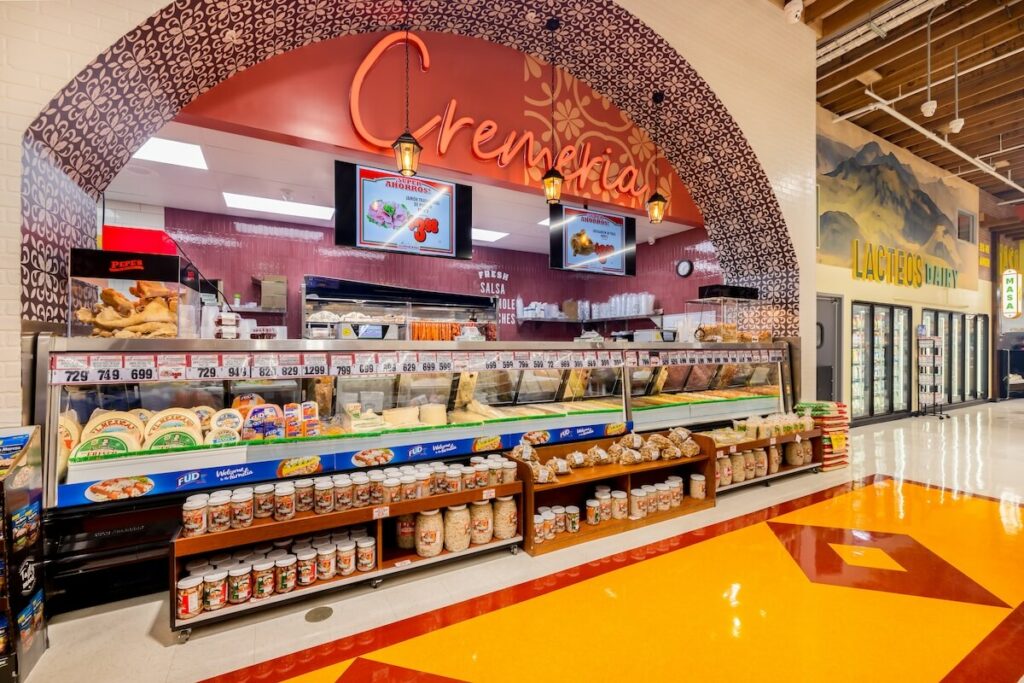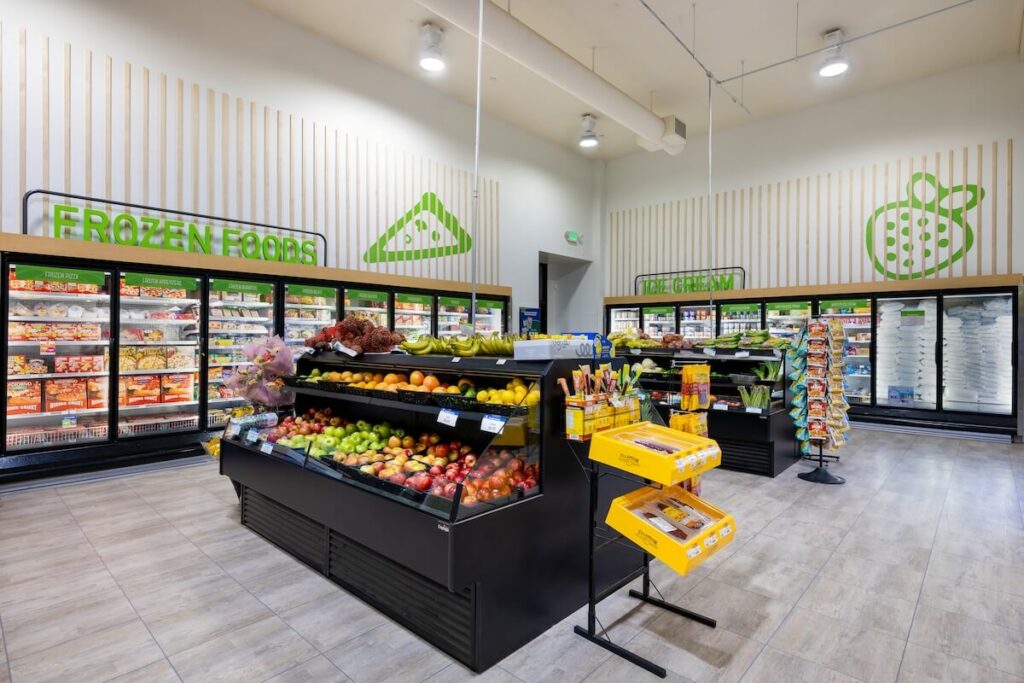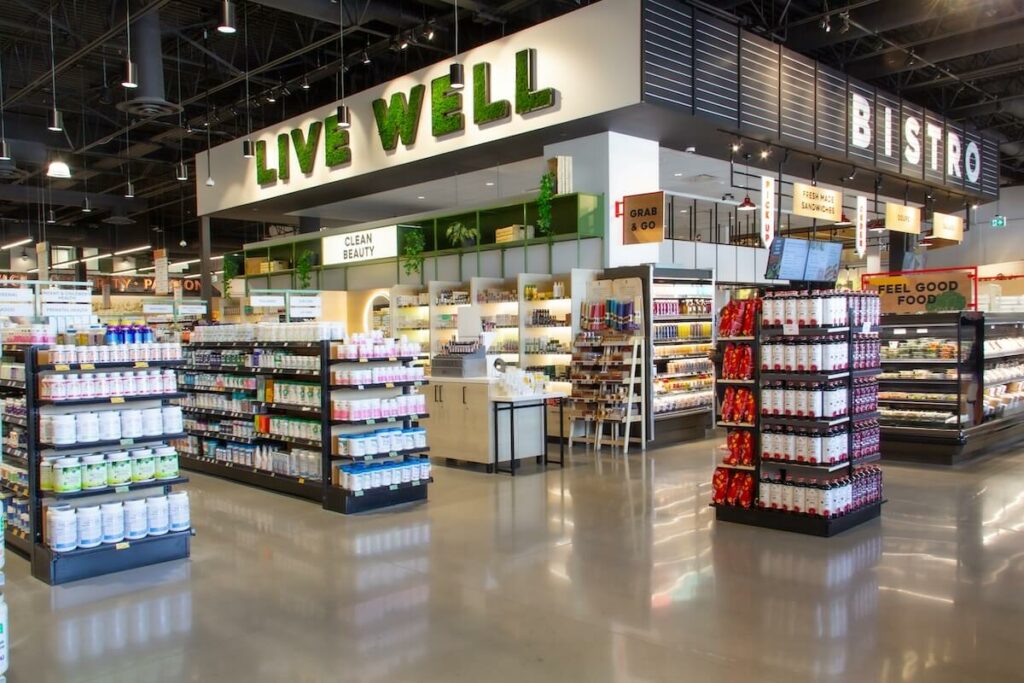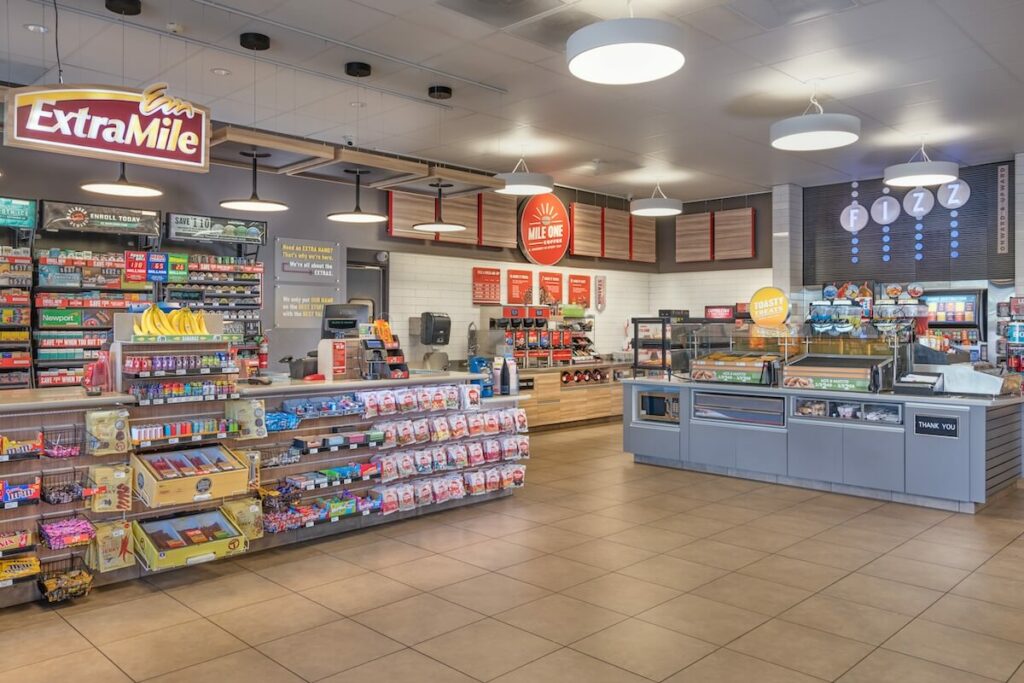A Comprehensive Guide to Remodeling Your Store
A well-executed renovation can elevate your customer experience, boost your sales, and enhance your brand image. However, remodeling your store can also be complex and challenging, demanding careful planning, budgeting, and execution.
This guide will assist you in navigating the different aspects of store remodeling, from identifying your goals and needs to exploring your options to assembling the right team to successfully completing the project. Whether you’re looking to make some aesthetic upgrades or expand your store space, this guide will equip you with the essential information and tips to make your store remodel a triumph.
1. Evaluate Needs and Identify Specific Goals for Your Store Remodel
The initial step in your store remodel is to identify your specific goals and objectives for your renovation project and evaluate your current needs and challenges. This will assist you in prioritizing your options, allocating your resources, and measuring your results. To do this, thoroughly analyze your store layout, customer feedback, and store data. Here are some questions that can guide your analysis:
- What are the main issues with your current store layout, design, equipment, or services?
- What are the main complaints or suggestions from your customers regarding your store?
- What are the main trends and changes in your industry, market, or customer behavior that affect your store?
- What are your store’s main strengths and weaknesses compared to those of your competitors?
- What are your store’s main opportunities and threats in the near and long term?
- What are the main goals and outcomes you want to achieve with your store remodel?
- How will you measure and evaluate your success?
Based on your analysis, you can identify your store’s most essential and urgent needs and challenges and the most relevant and realistic goals and objectives for your retail remodel. You can also use a SWOT analysis tool to help you organize and visualize your findings.
Strengths
What are the positive aspects of your store that give you an advantage over your competitors?
Weaknesses
What are the negative aspects of your store that put you at a disadvantage compared to your competitors?
Opportunities
What are the external factors or trends that create favorable conditions or possibilities for your store?
Threats
What are the external factors or trends that create unfavorable conditions or risks for your store?
Once you have completed your SWOT analysis, you can use it to guide your decision-making and action planning.
Asking these questions will help clarify the specific goals you have for renovating your store, such as:
- Improve the appearance and functionality of the store.
- Stay competitive and attracting new customers.
- Meet the changing needs and preferences of existing customers.
- Expand the store space and adding new products or services.
- Increase operational efficiency and reducing costs.
Whatever your reason, it’s important to have a clear vision of what you want to achieve with your store remodel and how it will align with your business goals and strategy.
2. Exploring Retail Renovation Options
Based on your goals, needs, and budget, you can choose which approach, or approaches, are needed to improve your store layout, design, equipment, and services. To help you compare and evaluate your options, view the tabs below:
Cosmetic Upgrades
These options require minimal time, effort, and money to implement. They usually involve cosmetic changes or minor adjustments that can improve your store’s appearance and functionality.
Examples
- Painting the walls or ceiling.
- Changing the lighting or flooring.
- Replacing the signage or fixtures.
- Adding plants or artwork.
- Updating the window displays or merchandising.
Layout Redesign; Equipment & Technology Upgrades
These options require moderate time, effort, and money to implement. They usually involve layout changes or equipment upgrades that can improve your store’s efficiency and customer experience.
Examples
- Moving or adding walls or partitions.
- Changing the store entrance or exit.
- Reconfiguring the shelves or counters.
- Replacing or adding refrigerators, freezers, ovens, or other equipment.
- Installing or upgrading security systems or point-of-sale systems.
Service Expansion; Store Expansion
These options require significant time, effort, and money to implement. They usually involve structural modifications or service expansions to increase your store’s capacity and revenue.
Examples
- Adding a new floor, a mezzanine, a basement, or an extension.
- Expanding the store front or back.
- Adding a new product line or service category.
- Adding a bakery, a deli, a coffee shop, or a pharmacy.
- Adding a drive-through, a self-checkout, or a delivery service.
This categorization can help you prioritize your options and plan your budget and timeline. You can start with the easy options that give you quick and noticeable results. You can then move on to the medium options that give you more substantial and lasting benefits. You can finally consider the challenging options that can provide you with the most significant and transformative outcomes. However, it’s important to be realistic and flexible about your options and adjust them according to your budget and timeline constraints. Also, consider the impact of each option on your store operations, customer satisfaction, and environmental sustainability.
3. Finalize Budget and Financing for Your Retail Renovation
A Monash University study found that "Sales to new customers increased by 43 to 44 percent after remodeling, and those to existing customers went up by seven to 10 percent."
(Source: Store Remodelling Benefits Bottom Line)
Your store remodel budget will depend on the type and scope of your renovation project and the quality and quantity of the materials and labor you need.
Here are some tips to help you budget and finance your store remodel:
- Estimate your costs: Research and compare the materials, equipment, and labor prices required for your store remodel. Online tools, catalogs, or quotes from suppliers and contractors can give you an idea of the market rates. (See our insight for staying on-budget and on-time.)
- Set your budget: Set a realistic and reasonable budget for your store remodel. Consider your goals and needs, options and priorities, and expected outcomes and benefits—also, factor in contingency funds for unexpected expenses or delays.
- Explore your financing options: Explore how you can finance your store remodel. A financing calculator or comparison tool can help you find the best financing option for your store remodel.
- Calculate your ROI: Calculate your store remodel’s return on investment (ROI). Estimate how much revenue, profit, or savings you can generate from it. Also, estimate how long it will take you to recover your costs and break even.
4. Assemble the Right Team for a Successful Store Remodel
If you haven’t already started to put together a team, now is the time to hire professionals who can help bring your vision to life. Depending on the scope and complexity of your project, you may need to engage the services of several professionals:
- Designer: A designer plays a pivotal role in shaping your store remodel’s aesthetic and functional aspects. They can help you develop a comprehensive plan and choose the most suitable layout, design, color scheme, lighting, and materials for your store. They can also assist in creating a mood board, a floor plan, a 3D model, or a rendering of your proposed store remodel.
- Contractor: A contractor is responsible for managing and coordinating your store remodel’s construction and installation aspects. They can assist in obtaining the necessary permits, sourcing materials, and procuring equipment for your project. They also supervise and liaise with subcontractors, such as electricians, plumbers, carpenters, or painters.
- Engineer: An engineer ensures your store remodel’s structural integrity and safety. They evaluate the load-bearing capacity, fire resistance, and energy efficiency of your store and ensure compliance with building codes, regulations, and standards for your project.
- Manufacturer: A manufacturer is instrumental in turning your design ideas into tangible elements. They fabricate the decor and fixtures based on the design specifications and ensure they align with your store’s aesthetic and functional requirements.
- Installers: Installers, either through the general contractor or a third-party installation firm, are responsible for installing the fabricated decor and fixtures in your store. They ensure the installation is done correctly and safely, adhering to the design plan.
Building the right team of professionals can significantly impact your store remodel’s quality, speed, and cost. Choosing professionals with relevant experience, expertise, and a good reputation is important. Also, consider their style, personality, and communication skills to ensure a smooth working relationship. Here are some tips to help you hire the right team for your store remodel:
- Do your research: Investigate and compare the portfolios, reviews, and references of the professionals you are considering for your project. Online platforms, directories, or referrals can help you find and contact potential candidates. Visiting their previous or current projects can give you a firsthand view of their work.
- Conduct Interviews: Interview your candidates and ask pertinent questions about their qualifications, experience, and approach to your project. Evaluate their skills, knowledge, and creativity, as well as their availability, reliability, and compatibility. Request a proposal, a contract, or a quote for your project.
- Negotiate Terms: Discuss and agree on the terms and conditions of your project with your chosen professionals. This includes the scope, timeline, budget, payment schedule, warranty, and dispute resolution process. Review and sign a written agreement that outlines the project details and expectations.
5. Plan, Permit, and Execute Your Store Remodel
The fifth and final step in planning your store remodel is to plan, permit, and execute your project. This is the most critical and complex stage of your store remodel, which requires careful coordination, communication, and supervision. Work closely with your team of professionals and follow your project’s best practices and guidelines.
- Plan your project
Plan your project in detail and create a realistic and flexible schedule. Consider the sequence, duration, and dependencies of each task and milestone. Also, consider the potential risks, challenges, and delays that may arise and prepare contingency plans. A project management tool or software can help you plan and monitor your project. - Permit your project
Obtain the necessary permits and approvals from the relevant authorities and agencies. Comply with the local, state, and federal laws and regulations that apply to your project. Also, follow your project’s health, safety, and environmental standards and protocols. Consult with your team of professionals or a permit specialist to help you navigate the permitting process. - Execute your project
Execute your project according to your plan and contract. Communicate and collaborate with your team of professionals and subcontractors. Also, supervise and inspect the quality and progress of your project. A checklist or a punch list can help you track and verify the completion of each task and milestone.
Bonus: C-Store and Supermarket Remodel Tips
Each industry has unique problems to solve and opportunities to better serve its customers. In addition to the guide above, here are a few more specific suggestions for the Convenience Store and Grocery industries.
A convenience store remodel focuses on maximizing space efficiency, improving product accessibility, and enhancing the overall shopping experience. Given the fast-paced nature of convenience shopping, the remodel should prioritize ease of movement, clear product visibility, and quick checkout processes. Here are specific actions to consider:
- Optimize Layout for Quick Shopping
Redesign the store layout to create a clear path through the store, effortlessly guiding customers to high-demand items. - Modernize Equipment and Technology
Upgrade refrigeration units to more energy-efficient models and introduce advanced POS systems for faster checkout. Implement digital signage for promotions and easy price updates. - Enhance Lighting and Aesthetics
Use bright, welcoming lighting to make products more appealing and the store more inviting. New paint, updated fixtures, and branded signage can achieve a fresh, modern look. - Expand Product Offerings
Introduce a wider variety of products, focusing on high-margin and locally sourced items. Consider adding a coffee station, a quick-serve restaurant, or a deli to attract more customers. - Improve Exterior and Accessibility
Enhance curb appeal with updated signage, well-lit parking areas, and clear store branding. Ensure the store is accessible to all customers, including those with disabilities.
Supermarket remodels should create an environment that enhances shopping efficiency while providing a pleasant and engaging experience. The focus should be on fresh food offerings, sustainability, and community integration. Here are specific actions for a supermarket remodel:
- Revitalize Fresh Food Departments
Redesign the layout of fresh produce, bakery, and deli sections to make them more inviting. - Introduce Specialty Sections
To cater to diverse customer preferences, add specialty sections such as organic, gluten-free, or international foods. Highlight these areas with distinct signage and lighting. - Upgrade Refrigeration and Display Units
Invest in energy-efficient refrigeration and modern display units to enhance product presentation and freshness. Smart shelving can also help manage inventory and reduce waste. - Incorporate Sustainable Practices
Use sustainable materials in construction and decor. Implement energy-saving lighting and HVAC systems. Offer recycling stations and promote the use of reusable bags. - Enhance Customer Services
Add value through online ordering and pickup, in-store cafes, nutritionist consultations, and cooking demonstrations. These services can significantly improve customer loyalty and store differentiation. - Improve Signage and Wayfinding
Implement clear, easy-to-read signage and aisle markers to help customers navigate the store efficiently.
Conclusion
Remodeling your store can be a complex and challenging process, but with careful planning, budgeting, and execution, it can be a rewarding and profitable endeavor. Following the steps outlined in this guide can enhance your customer experience, increase your sales, and improve your brand image.
Summary
This comprehensive guide outlines the five stages of a successful store remodel, covering planning, budgeting, design, team assembly, permitting, and execution. Properly executed store renovations can enhance customer experience, increase sales, and strengthen brand image. The guide also includes industry-specific tips for convenience stores and supermarkets to optimize layout, technology, aesthetics, and service offerings.
Key Takeaways from a Successful Store Remodel
- Evaluate your store’s current needs and set clear, measurable goals using tools like SWOT analysis.
- Choose the appropriate renovation approach: cosmetic upgrades, layout/equipment updates, or full service/space expansion based on impact, time, and budget.
- Plan your budget carefully, including materials, labor, contingency funds, financing options, and ROI estimation.
- Assemble a professional team including designers, contractors, engineers, manufacturers, and installers to ensure quality and efficiency.
- Develop a detailed project plan, obtain necessary permits, and execute renovations with oversight, using project management tools and checklists.
- For convenience stores, focus on layout efficiency, product visibility, quick checkout, and customer engagement zones.
- For supermarkets, prioritize fresh food displays, specialty sections, energy-efficient equipment, sustainable practices, and enhanced services.
- Renovations should balance modern aesthetics with flexibility, durability, and alignment with your brand identity.
- Store remodels typically occur every 5–10 years, depending on market trends, customer expectations, and regulatory requirements.
Frequently Asked Questions
Q. How often should a store undergo renovation or remodeling?
A. Typically, stores renovate every 5–10 years. Frequency depends on business type, location, market trends, budget, regulatory compliance, and the need to maintain a fresh customer experience.
Q. What is the difference between renovation and remodeling?
A. Renovation updates or repairs an existing space without major structural changes, while remodeling involves significant alterations to layout, structure, or design to transform the space.
Q. What are the main stages of a store remodel?
A. The five stages are: 1) Evaluate needs and set goals, 2) Explore renovation options, 3) Finalize budget and financing, 4) Assemble the right team, and 5) Plan, permit, and execute the project.
Q. How can a remodel improve customer experience and sales?
A. By optimizing store layout, creating distinct product zones, upgrading technology and equipment, enhancing aesthetics, expanding product offerings, and improving operational efficiency, stores can boost customer engagement, satisfaction, and revenue.




